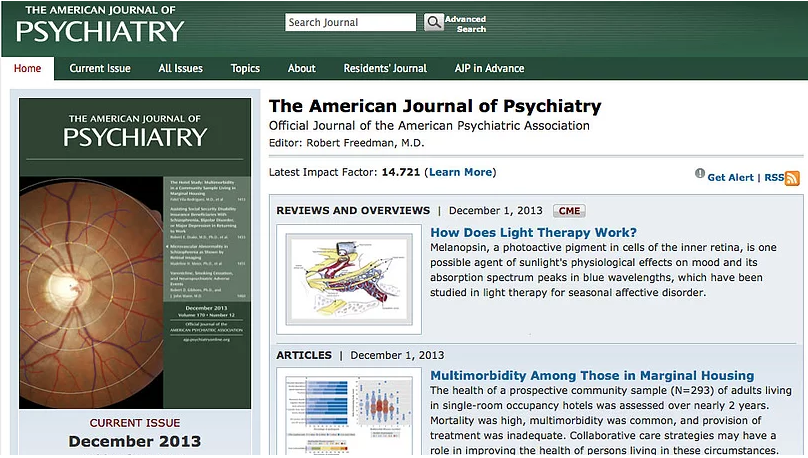Publications
|
|
Oren, D. A. (1996). "Humoral phototransduction: blood is a messenger." Neuroscientist 2(July): 207-210. Oren, D. A., et al. (2002). "Effects of light on low nocturnal bilirubin in winter depression: a preliminary report." Biological Psychiatry 51: 422-425. Oren, D. A., et al. (2013). "SAD and the not-so-single photoreceptors." American Journal of Psychiatry 170(12): 1403-1412. Oren, D. A., et al. (2017). "Retinal venous blood carbon monoxide response to bright light in male pigs: a preliminary study." Journal of Photochemistry and Photobiology B 168: 12-15. Oren, D. A. et al. (2020). "Carbon monoxide: a critical physiological regular sensitive to light." Translational Psychiatry 10: 87. Click here for the article: https://www.nature.com/articles/s41398-020-0766-1 |
|
|
Koziorowski, M., et al. (2012). "The gaseous messenger carbon monoxide is released from the eye into the ophthalmic venous blood depending on the intensity of sunlight." Journal of Biological Regulators and Homeostatic Agents 26(1): 111-118. Koziorowski, M., et al. (2016). "Local mid-day concentration of carbon monoxide in arterial blood in the mammalian head area during summer vs. winter." Neuropsychobiology 74: 242. |
|
Krzymowski, T. and S. Stefanczyk-Krzymowska (2012). "Local retrograde and destination transfer of physiological regulators as an important regulatory system and its role. Facts and hypothesis." Journal of Physiology and Pharmacology 63(1): 3-16. Krzymowski, T. and S. Stefanczyk-Krzymowska (2015). "New facts and the concept of physiological regulation of the dopaminergic system function and its disorders." Journal of Physiology and Pharmacology 66(3): 331-341. |
|
|



